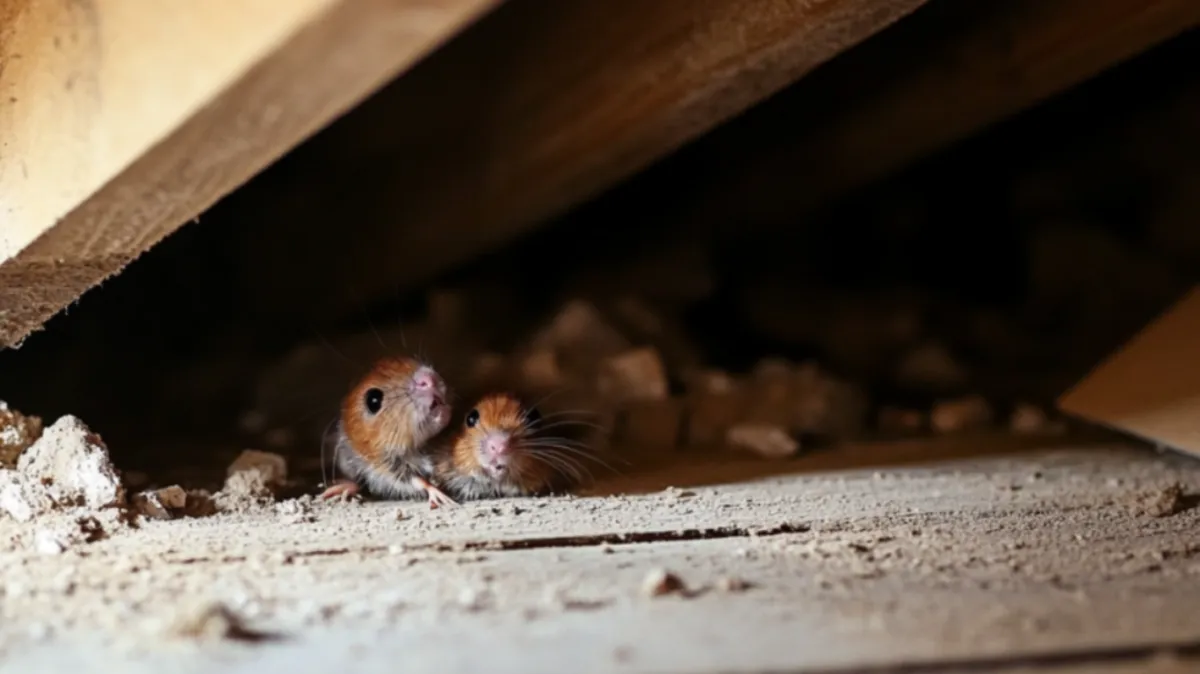
Keeping Crawl Spaces Pest-Free in the Heat of Summer
Why Do Pests Flock to These Areas During Summer?
Crawl spaces, attics, and basements often become unexpected pest hotspots during the summer months—especially in warm, humid climates like Burnaby. Here’s why these areas are so appealing to pests when the heat sets in:
1. Moisture and Humidity Build-Up
Condensation from summer heat: The temperature difference between a cool basement and the hot outdoor air often causes condensation, which creates damp conditions.
Leaky pipes or poor ventilation: Water leaks or stagnant airflow increase moisture levels, making the environment ideal for pests such as termites, cockroaches, and silverfish.
Attraction to water sources: During dry spells, many pests actively seek out humid zones to hydrate and reproduce.
2. Naturally Cooler Temperatures
Shelter from the heat: When outdoor temperatures soar, pests like spiders and centipedes seek out cooler hiding places.
Insulated refuge: These enclosed, shaded areas mimic underground habitats, offering a temperature-controlled place to thrive.
Long-term stay: If pests find these cooler areas comfortable and undisturbed, they’re likely to settle in for the season.
3. Dark, Quiet, and Undisturbed Zones
Limited human activity: Since crawl spaces and attics are seldom accessed, pests can remain undetected as they nest and multiply.
Prime nesting grounds: Rodents and insects favor secluded environments to breed and build nests without the threat of predators or frequent disruptions.
Unnoticed entry points: Small cracks in foundations, wall voids, or ventilation systems offer easy access to these hidden hideouts.
Common Pests Found in Crawl Spaces, Attics, and Basements
Crawl spaces, attics, and basements are often out of sight—and unfortunately, they’re also out of mind when it comes to pest control. Identifying the specific pests that frequent these hidden areas can help homeowners in Burnaby stay one step ahead of infestations. Here’s a breakdown of the usual suspects:
1. Rodents (Mice and Rats)
Rodents are among the most common invaders of quiet, enclosed areas in the home.
Why they invade: They seek out shelter, nesting materials, and food sources—especially during extreme weather.
What they damage: Rodents chew on electrical wires, wooden beams, and insulation, increasing the risk of fire and structural issues.
Health hazards: Their droppings, urine, and dander can contaminate air and surfaces, posing serious health risks like Hantavirus and Salmonella.
Warning signs: Scratching noises in the walls or ceiling, small droppings, chewed wires or cardboard.
2. Termites
These silent destroyers are a year-round concern but become especially active in moist, tucked-away areas during summer.
Preferred habitat: Termites thrive in damp wood, often found in crawl spaces with poor ventilation.
Destructive behavior: They eat through floor joists, beams, and wall supports—often undetected until the damage is severe.
Indicators of presence: Mud tubes on foundation walls, bubbling paint, and hollow-sounding wood when tapped.
High-risk conditions: Wood-to-soil contact, leaks, or stored wood debris indoors.
3. Cockroaches
Roaches are highly adaptable and thrive in dark, humid environments.
Where they hide: Basements, laundry rooms, and cluttered attic corners where moisture and food residue accumulate.
Health risks: Known carriers of bacteria, they can contaminate surfaces and food, worsening allergies and asthma.
Tell-tale signs: Musty odor, shed skins, fecal droppings, and egg casings in hidden crevices.
Preventative tip: Keep these spaces dry and eliminate any food remnants or organic debris.
Strategies to Keep These Areas Pest-Free
Your crawl space, attic, and basement may be out of sight—but they shouldn’t be out of your pest control plan. Implementing proactive measures can significantly reduce the risk of infestations and protect your home from costly damage. Below are essential strategies every Burnaby homeowner should consider:
1. Control Moisture Levels
Moisture is one of the biggest attractants for pests. By keeping these areas dry, you make them far less appealing to invaders.
Install Dehumidifiers: This is especially useful in basements and crawl spaces where moisture buildup is common. Lower humidity levels can deter pests like termites, silverfish, and cockroaches.
Ensure Proper Ventilation: Install vent fans or passive ventilation to increase airflow in attics and crawl spaces, helping to keep humidity low and prevent mold.
Fix Leaks Promptly: Address any leaky pipes, HVAC condensation, or roof drips to stop moisture accumulation at the source.
Use Vapor Barriers: In crawl spaces, installing a vapor barrier on the ground can block moisture from rising into the area.
2. Seal Entry Points
Even small cracks and gaps can be an open invitation for pests.
Inspect for Cracks and Gaps: Examine your home’s foundation, siding, and rooflines. Pay close attention to areas where utilities or vents enter the home.
Seal with Appropriate Materials: Use silicone caulk, expanding foam, or metal mesh to close gaps. For larger holes, install pest-resistant hardware cloth.
Install Door Sweeps and Window Screens: Keep pests out by ensuring that basement doors are fitted with door sweeps and attic windows are covered with fine-mesh screens.
Cover Vents and Chimneys: Use vent covers and chimney caps to keep out birds, bats, and rodents.
3. Maintain Cleanliness
A clean and organized space offers fewer hiding places and food sources for pests.
Declutter Unused Items: Clear out piles of newspaper, cardboard boxes, and old fabric—these are prime materials for nesting and breeding.
Use Plastic Storage Bins: Replace cardboard boxes with sealed plastic containers. Pests are less likely to chew through them or find shelter inside.
Keep Floors Clean: Vacuum and sweep regularly, even in these less-used areas, to eliminate crumbs, webs, and pest attractants.
Check and Clean HVAC Ducts: Accumulated dust and organic matter in ducts can attract insects and rodents.
To wrap it all up, your attic, basement, and crawl space deserve just as much pest prevention as the rest of your home—especially during Burnaby’s warm and humid summers. By staying proactive with moisture control, sealing entry points, and maintaining regular inspections, you can stop pests before they become a serious problem. For a deeper dive into protecting these vulnerable spaces, explore our website: